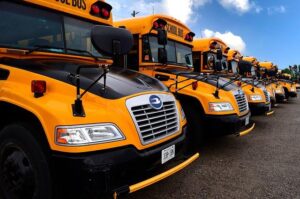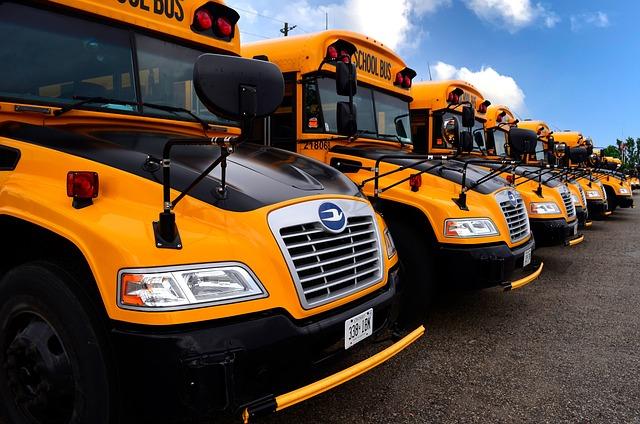Prioritizing School Transportation Funding in Illinois’ 2027 Education Budget
The Illinois State Board of Education has spotlighted school transportation funding as a top priority in its upcoming 2027 budget plan. Acknowledging transportation as a vital component for equitable educational access, the proposal seeks to rectify persistent funding imbalances that have disproportionately impacted both rural and urban school districts. This renewed commitment aims to enhance the safety, dependability, and inclusiveness of student transportation services statewide.
Highlighted budget initiatives include:
- Significant investment in upgrading bus fleets to incorporate environmentally friendly technologies and reduce upkeep expenses.
- Expanded resources for complete driver training programs to elevate safety standards and operational efficiency.
- Increased support for transportation in underserved and remote communities, ensuring broader student access.
| Funding Category | Proposed Budget Increase | Anticipated Outcome |
|---|---|---|
| Bus Fleet Modernization | $30 million | Deployment of greener, cost-effective vehicles |
| Driver Education | $5 million | Improved safety and operational protocols |
| Rural Transit Services | $15 million | Enhanced transportation access for remote students |
Obstacles in Delivering Safe and Efficient School Transportation
Across Illinois, school districts face a complex array of challenges in maintaining safe and efficient transportation systems. Many districts operate aging bus fleets that require frequent repairs, inflating maintenance costs beyond available budgets. Compounding this issue is a shortage of qualified bus drivers, driven by competitive wages in the private sector and stringent licensing requirements, which often leads to route cancellations or reduced service hours. Additionally, escalating fuel prices and upkeep expenses place further strain on limited financial resources, frequently delaying necessary upgrades and compromising safety.
Operational complexities also arise from shifting student populations and expanding service areas. Crafting routes that optimize efficiency while prioritizing student safety demands complex planning tools, which remain out of reach for many districts. Furthermore, evolving state regulations necessitate ongoing training and safety enhancements. Key challenges include:
- Difficulty recruiting and retaining qualified drivers
- Rising costs for fuel and vehicle maintenance
- Limited access to advanced fleet technologies
- Complex route coordination to meet diverse student needs
| Challenge | Effect | District Strategies |
|---|---|---|
| Driver Shortages | Service interruptions and delays | Offering hiring bonuses and flexible scheduling |
| Outdated Bus Fleets | Higher repair costs and downtime | Applying for state grants and phased vehicle replacement |
| Fuel Price Volatility | Budget overruns | Implementing route optimization and exploring choice fuels |
| Regulatory Compliance | Increased training demands | Conducting regular safety workshops for staff |
Strategies for Sustainable Funding and Modernization in School Transportation
Experts in education finance stress that establishing a resilient funding framework for school transportation requires diversifying income sources alongside strategic infrastructure investments. They recommend blending state appropriations, public-private collaborations, and dedicated local tax initiatives to build a dependable financial foundation. This diversified approach not only covers immediate operational expenses but also supports long-term capital projects such as fleet upgrades and enhanced safety systems.Relying on a single funding stream, experts caution, risks financial instability that could disrupt essential transportation services.
Investment priorities should focus on data-driven infrastructure planning and the adoption of cutting-edge technologies to boost efficiency and reduce costs. Recommended innovations include:
- Advanced routing software to minimize mileage and fuel consumption
- Electric and hybrid buses to decrease emissions and maintenance needs
- Integrated surveillance and monitoring systems to enhance security and reduce liability
Though these technologies require significant initial investment, they promise substantial savings and service improvements over time. The following table summarizes projected financial benefits over a decade:
| Investment | Upfront Cost | Projected 10-Year Savings | Primary Benefit |
|---|---|---|---|
| Advanced Routing Software | $500,000 | $1.2 million | Fuel and time efficiency |
| Electric Bus Fleet | $3 million | $2.5 million | Reduced emissions and maintenance |
| Security and Monitoring Systems | $250,000 | $600,000 | Enhanced safety and liability reduction |
How Boosted Transportation Funding Improves Attendance and Educational Equity
Recent increases in school transportation funding across Illinois have demonstrated positive impacts on student attendance rates. By easing financial pressures on districts and guaranteeing dependable bus services,a greater number of students can consistently access educational opportunities. This is especially critical for those in rural and underserved areas, where transportation challenges have historically contributed to higher absenteeism. Enhanced funding reduces missed school days caused by unreliable transit, directly supporting improved academic performance.
Moreover, these investments advance educational equity by narrowing access gaps. Districts serving low-income populations report better participation in school programs and extracurricular activities, fostering a more inclusive environment. Targeted funding also enables the acquisition of ADA-compliant vehicles and specialized training for staff, ensuring transportation services accommodate students with disabilities. Reliable transportation further strengthens family-school connections, enhancing community engagement and student support networks.
- Reduction in chronic absenteeism: Pilot programs report up to a 15% enhancement.
- Greater extracurricular involvement: Improved transport options facilitate after-school participation.
- Enhanced support for special needs students: Investment in accessible vehicles and trained personnel.
| District Type | Attendance Improvement | Equity Advancements |
|---|---|---|
| Urban | 12% | Expanded access to programs |
| Suburban | 9% | Improved special education transportation |
| Rural | 18% | Closed transportation gaps |
Conclusion: Investing in Transportation as a Foundation for Educational Success
As Illinois finalizes its 2027 education budget, the focus on bolstering school transportation funding highlights the indispensable role that safe, reliable transit plays in student achievement and equity. Stakeholders across the state are closely monitoring budget deliberations, understanding that strategic investments in transportation infrastructure are key to ensuring all students can access learning environments prepared and ready to thrive.







